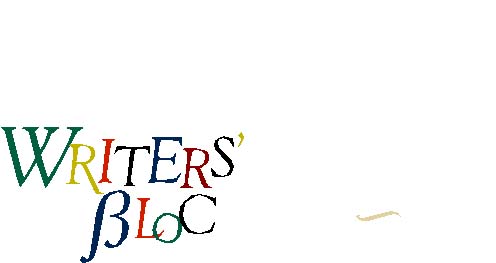

A little satin like wind at the door.
My mother slips past in
great side hoops,
arced like the ears of elephants--
on
her head a goat-white wig,
on her cheek a dollop of mole.
She has entered the evening, and I
her room with its hazel
light.
Where her wig had rested is a leather
head,
a stand, perfect in its shadow but
carrying in fact,
where the face should be,
a swath of door. It cups
in its skull-curved closure
clay hair stays, a pouch of wig
talc
that snows at random and lends to the table
a
neck-shaped ring.
When I reach inside I am frosted
my hand like a pond in winter,
pale
fingers below of leaves or carp...
--From
The Ghost Trio by Linda Bierds
Poet Linda Bierds doesn't know why her attention was drawn toward the odd antique--a weathered, leathered wig stand once used by Charles Darwin's grandfather. But there it was, its bald orb and false-face trap door calling out to her from a display in a London museum. Calling out like ... well, like a poem in search of a writer.
"It immediately struck me. I remember asking myself why would they include that particular item in the display? What significance did it have in Darwin's life?" says Bierds. "Soon after that I found myself asking `What is the significance of this image to me? Why did it touch me?' "
It was the work of answering such questions--and countless others a writer must ask in the creative process--that turned the museum's wig stand into the eloquent opening of Bierds' most recent book of poetry, The Ghost Trio.
Simple, sometimes unremarkable images to most of us. "That's almost always how they start," says Bierds, reflecting on the convergence of life and art that is the heart of great poetry, of great writing in any genre. Listening to Bierds describe a poem's inception leaves one wondering whether writers are indeed born not made, arriving in the world with some innate literary vision or poetic nature.

Pure talent is, of course, part of the equation, says Bierds. But the new director of the University's highly acclaimed graduate creative writing program, and her colleagues, stress that it's a long, hard road from calling to perfection, from initial inspiration to completed text.
It is that road which these teachers--committed artists all--hope to help emerging writers navigate. Their reputation for doing so at the UW has grown steadily in the past decade. As many as 300 would-be writers apply for the graduate program's 16 annual openings.
In a U.S. News & World Report survey conducted in March, the University's Masters of Fine Arts program was ranked 10th among 200 creative writing offerings across the nation, tying with programs at Boston University, Washington University in St. Louis and Cornell.
The magazine's annual review included creative writing graduate programs for the first time in 1997, a year that also marks the 50th anniversary of poetry and fiction writing instruction at the UW.
Following the arrival of poetry master Theodore Roethke in 1947, generations of promising writers have blossomed here under the tutelage of contemporary poets, short-story authors, novelists and essayists: Nelson Bentley, David Wagoner, Colleen McElroy, Charles Johnson, David Bosworth, Shawn Wong and David Shields among them. Noted poets Tess Gallagher, '63, James Wright and Richard Hugo have all taken seats as students. They have been followed by a cadre of promising writers today, including poets Frances McCue, '88; and Sean Bentley, 81; and novelists David Guterson, '78, '82; and Dan Orozco, '94.
"As a faculty we believe we compare to any creative writing faculty in the country,'' says longtime instructor David Shields, author of the critically acclaimed novels Dead Languages and Heroes.
Learning to Write: Putting Tools in the Toolbox
Finding Your "Voice": It's the Most Important Trick
Balancing Act: Professors Take on Teaching and Their Own
Writing
Top Ten Faculty
for Top Ten Program
Send a letter to the editor at columns@u.washington.edu.